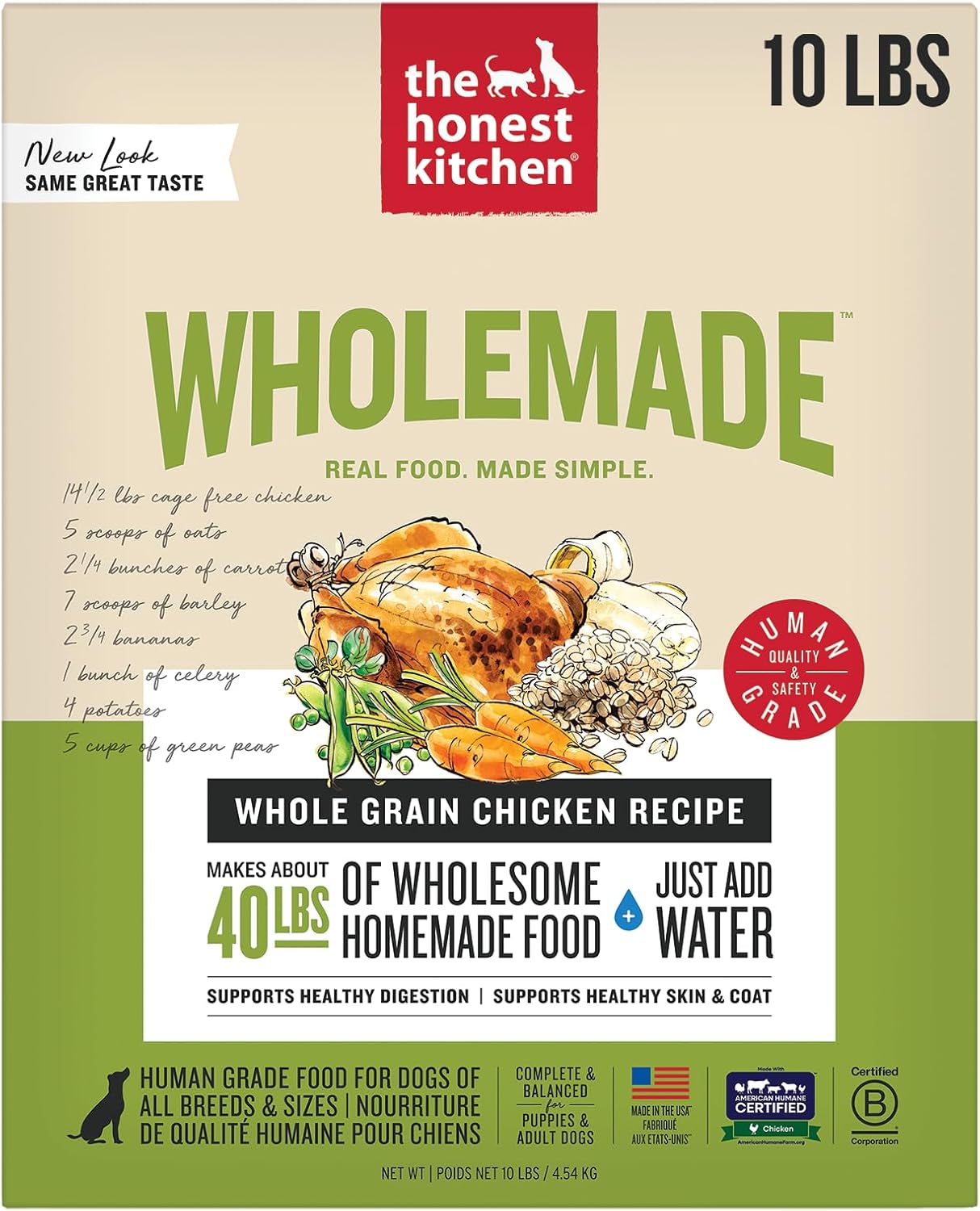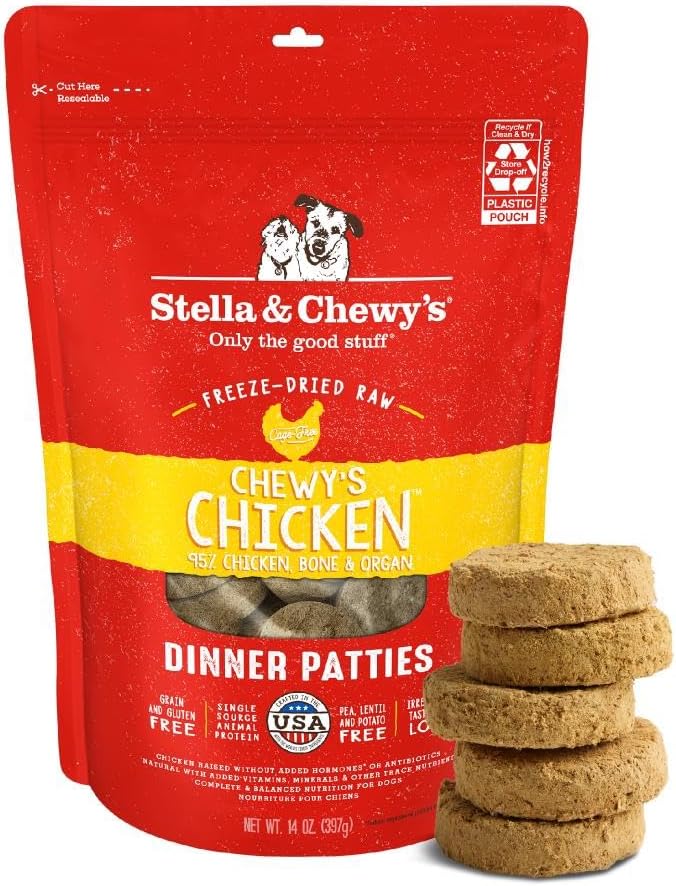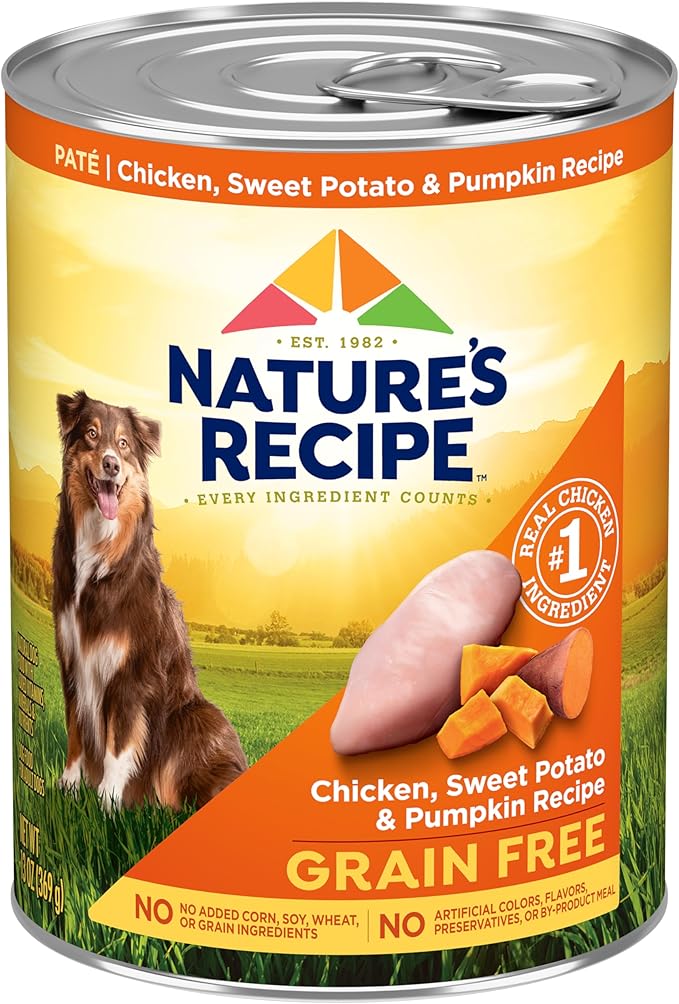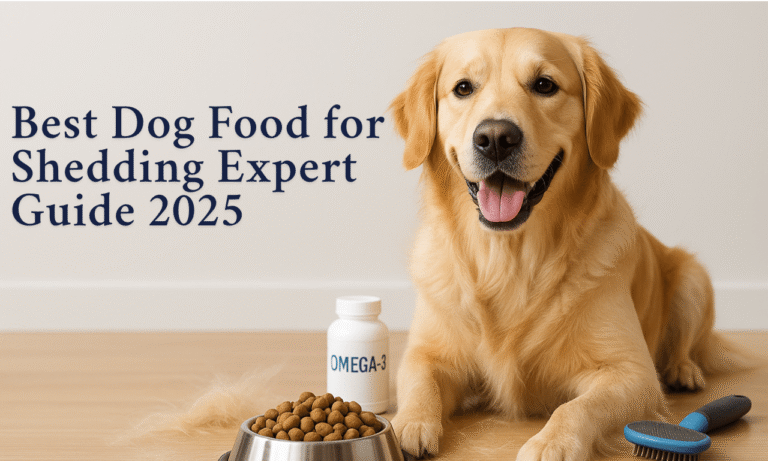Quick Summary: Why Dehydrated Dog Food Might Be Right for Your Dog
Top Reasons to Choose Dehydrated Dog Food:
- High Nutrient Retention: Gentle drying preserves more vitamins and enzymes than high-heat kibble processing.
- Improved Digestibility: Easier for many dogs, especially those with sensitive stomachs, to break down and absorb.
- Clean Ingredients: Often features whole-food ingredients with fewer fillers and artificial preservatives.
- Convenience of Raw: Offers many benefits of a raw diet without the complex handling and storage requirements.
Best For: Dog owners seeking a nutritional upgrade from kibble who are not ready for a full raw diet, or for dogs with digestive sensitivities who benefit from minimally processed foods.
Pros and Cons of Dehydrated Dog Food
Feature | Pros | Cons |
|---|---|---|
Nutrient Retention | Gentle, low-heat processing helps preserve natural vitamins, minerals, and enzymes often lost in high-heat extrusion (kibble making). | Some heat is still used, so it may not retain as many nutrients as freeze-dried food. Nutrient levels can vary by brand and method. |
Digestibility | Minimally processed ingredients are often easier for dogs to digest, making it a good choice for dogs with sensitive stomachs. | Rehydration is often necessary for optimal digestion; feeding it dry can be less digestible and lead to dehydration. |
Shelf Life & Storage | Excellent shelf life (often 12-18 months unopened). Lightweight and compact, making it easy to store and great for travel. | Once rehydrated, it must be treated like fresh food and refrigerated, typically for no more than a few days. |
Cost | Less expensive than many freeze-dried or fresh-frozen raw diets. | Significantly more expensive per serving than traditional dry kibble. |
Preparation | Simple to prepare; just add water and wait a few minutes. Much easier and safer than handling raw meat. | Requires preparation time for every meal, unlike the scoop-and-serve nature of kibble. You must have access to clean water. |
Ingredient Quality | Typically made with human-grade or high-quality whole-food ingredients and transparent, shorter ingredient lists. | The term “natural” is not regulated. You still need to read labels carefully to avoid unwanted fillers or preservatives. |
Introduction
As a dedicated dog owner, you want the best for your companion. You’ve researched nutrition, and you suspect the highly processed, brown pellets of kibble might not be the optimal choice. Yet, the idea of a full raw diet feels daunting, with its strict safety protocols and freezer space requirements. You’re caught in the middle, looking for a solution that offers superior nutrition without the complexity. This is where dehydrated dog food enters the picture, offering a compelling bridge between processed kibble and a raw diet.
This guide is your comprehensive resource for understanding this growing category of pet food. We’ll explore what air-dried and dehydrated dog food is and how its gentle production process helps retain vital nutrients. You will learn about the key benefits, from improved digestibility to longer shelf life, and what potential limitations to consider, such as cost and preparation. We’ll also provide our vet-tested picks for the best dehydrated meals for dogs, giving you actionable recommendations. Finally, we’ll walk you through how to successfully transition your dog and answer your most pressing questions.
What Is Dehydrated Dog Food and How Is It Made?
Dehydrated dog food is a form of pet food where moisture has been removed from raw ingredients using a gentle, low-heat process. Imagine sliced fruits or meats being slowly dried in a dehydrator—the concept is the same. Manufacturers typically circulate warm, dry air over the ingredients for an extended period, slowly evaporating the water content. This process inhibits the growth of bacteria, mold, and yeast, creating a shelf-stable product without the need for artificial preservatives.
The key distinction lies in its minimal processing. Unlike traditional kibble, which is cooked at extremely high temperatures (a process called extrusion), dehydration uses just enough heat to remove moisture while preserving the nutritional integrity of the ingredients. This gentle technique helps protect heat-sensitive vitamins, minerals, and enzymes that are often degraded or destroyed during high-heat cooking. The result is a food that is much closer to its natural state.
It’s important to distinguish dehydrated food from freeze-dried food. While both remove moisture, freeze-drying involves freezing the food and then sublimating the ice into vapor in a vacuum. Freeze-drying generally retains even more nutrients but is a more expensive and energy-intensive process, which is reflected in its higher price point. Dehydrated dog food, often called “air-dried dog food,” strikes a balance, offering excellent nutrient retention at a more accessible cost.
Key Benefits of Dehydrated Dog Food
Better nutrient retention
The primary advantage of dehydration is its ability to preserve the natural goodness of the ingredients.
- The low-heat, slow-drying process protects heat-sensitive nutrients, including B vitamins and antioxidants.
- Natural enzymes found in raw ingredients, which aid in digestion and metabolic function, remain active.
- Unlike kibble, where nutrients are often sprayed on after cooking, the nutrition in dehydrated food is locked into the ingredients themselves.
Improved digestibility for sensitive dogs
For dogs with finicky stomachs or food sensitivities, dehydrated food can be a game-changer.
- Because the ingredients remain closer to their raw state, they are often easier for a dog’s digestive system to break down and absorb.
- The process preserves natural fibers and prebiotics from fruits and vegetables, which support a healthy gut microbiome.
- Many brands offer limited-ingredient or novel protein formulas, ideal for dogs with allergies. [LINK: best food for sensitive stomach dogs]
Longer shelf life & convenience
Dehydrated food combines the nutritional benefits of fresh food with the convenience of dry food.
- Removing the moisture makes the food shelf-stable for over a year, eliminating the need for freezer space.
- It’s lightweight and compact, making it perfect for traveling, camping, or simply saving pantry space.
- Preparation is simple—just add water. This makes it far less messy and time-consuming than preparing a raw meal from scratch.
More natural ingredients, less processing
Owners who prioritize clean eating will appreciate the transparent ingredient lists common in dehydrated foods.
- Formulas often feature recognizable, whole-food ingredients like named meats, vibrant vegetables, and nutrient-rich fruits.
- They typically contain fewer fillers like corn, wheat, and soy, and avoid artificial colors, flavors, and chemical preservatives.
- This minimal-processing approach aligns with a more natural and ancestral way of feeding.
Good stepping-stone between kibble and raw diets
For those curious about raw feeding but not ready to commit, dehydrated food is the perfect entry point.
- It provides many of the benefits of a dehydrated raw dog food diet, such as higher nutrient bioavailability and cleaner ingredients.
- It eliminates the risks and hassles of handling raw meat, such as pathogen contamination and a steep learning curve. [LINK: raw dog food vs kibble]
- It allows you to test how your dog responds to a less-processed diet before considering a full transition to raw.
What to Watch Out For / Limitations
While dehydrated dog food offers many advantages, it’s essential to be aware of its limitations before making the switch. First and foremost is the cost. On a per-serving basis, dehydrated food is considerably more expensive than premium kibble. The use of high-quality, whole-food ingredients and the longer processing time contribute to this higher price.
Another critical factor is the need for rehydration. Most dehydrated foods are designed to be mixed with water before serving. This step is crucial for proper digestion and to ensure your dog stays hydrated. Feeding it dry can be hard on the digestive system and may not provide adequate moisture. Always check the package for a “complete and balanced” statement from AAFCO (The Association of American Feed Control Officials). Some products are intended as toppers or supplements, not as a complete meal.
Transitioning can also be a challenge for some dogs. The richness of the food can sometimes lead to temporary digestive upset. A slow, gradual transition over 7-10 days is recommended.
Finally, while dehydration is a gentle process, it is not the same as freeze-drying. Freeze-drying is a more advanced technique that removes moisture without using heat, which may preserve an even higher percentage of delicate nutrients. However, this technology comes at an even higher cost, making dehydrated food a more practical choice for many.
How to Choose a High-Quality Dehydrated Dog Food
Navigating the options for dehydrated meals for dogs can be confusing. Follow these steps to select a top-tier product for your companion.
- Check the Label Terminology: Look for explicit terms like “dehydrated” or “air-dried.” Vague descriptions like “gently cooked” or “minimally processed” can be misleading and may not refer to a true dehydrated product.
- Analyze the First Ingredients: The first few ingredients should be high-quality, named protein sources (e.g., “chicken,” “beef,” “lamb,” not “meat meal”). These should be followed by whole foods like vegetables, fruits, and seeds.
- Verify the AAFCO Statement: Ensure the packaging includes a nutritional adequacy statement, such as: “[Product Name] is formulated to meet the nutritional levels established by the AAFCO Dog Food Nutrient Profiles for [life stage].” This confirms the food is complete and balanced for your dog’s needs.
- Scrutinize for Additives: A high-quality food will have a short, understandable ingredient list. Avoid products with artificial preservatives (like BHA, BHT), colors, sweeteners, and unnecessary fillers like corn, wheat, or soy.
- Review the Preparation Instructions: Understand the rehydration process. The instructions will tell you how much water to add and how long to wait. This is a non-negotiable step for most formulas.
- Assess Brand Transparency: Reputable brands are open about their processes. Check their website for information on ingredient sourcing, where the food is made, and the specific dehydration method they use.
Best Dehydrated Dog Foods (Top 6 Picks)
Our team, in consultation with veterinary nutrition experts, has reviewed and tested numerous brands to bring you our top dehydrated dog food reviews for 2025.
The Honest Kitchen Whole Grain Chicken Dehydrated Dog Food
Key Features: This pioneering brand uses 100% human-grade ingredients, meaning the chicken, vegetables, and fruits are all fit for human consumption. The food rehydrates into a smooth, porridge-like consistency.
Best For: Picky eaters, dogs with sensitive teeth, and owners who demand human-grade standards. Excellent for all life stages.
Testing Notes: Our testers loved how quickly this formula rehydrated. Even finicky dogs took to it immediately.
Pros & Cons: Pros include exceptional ingredient quality and digestibility. The only downside is its premium price point.
Value Assessment: High cost, but outstanding value for pet owners prioritizing safety and human-grade nutrition.
Ziwi Peak Air-Dried Dog Food (Chicken Recipe)
Key Features: This food is gently air-dried into soft, jerky-like pieces and features a high-protein, meat-first recipe with nutrient-dense organ meats.
Best For: Dogs who prefer a chewy texture and active adult dogs needing high protein and high energy.
Testing Notes: Works as a complete meal or a high-value training treat. No rehydration is required, but adding water boosts hydration.
Pros & Cons: Pros include versatility and excellent palatability. The con is that it remains pricier than conventional kibble.
Value Assessment: Strong mid-premium value, offering air-dried benefits without reaching ultra-luxury pricing.
Stella & Chewy’s Freeze-Dried Raw Dinner Patties (Chicken & Duck)
Key Features: This freeze-dried formula preserves raw nutrition without heat and comes in convenient patty form.
Best For: Owners seeking a near-raw diet with maximum nutrient retention. The dual-protein option aids in protein rotation.
Testing Notes: Rehydration takes a few minutes. The lightweight patties are excellent for travel or backpacking.
Pros & Cons: Major pro: superior nutrient integrity. Main con: premium pricing compared to dehydrated foods.
Value Assessment: High cost but high nutritional payoff for those committed to raw-style diets.
Only Natural Pet EasyRaw Dehydrated Dog Food (Chicken & Sweet Potato)
Key Features: This entry-level dehydrated diet uses simple, whole-food ingredients and rehydrates into a hearty, stew-like texture.
Best For: Budget-conscious owners wanting to upgrade from kibble without jumping to ultra-premium human-grade formulas.
Testing Notes: Dogs found the texture appealing, and it performed well as both a full meal and a topper.
Pros & Cons: The main pro is its affordability relative to competitors. A con is that it uses fewer exotic proteins than high-end brands.
Value Assessment: Excellent value for owners entering the dehydrated category.
Primal Freeze-Dried Nuggets Chicken Recipe
Key Features: A freeze-dried formula known for its limited ingredient list—featuring chicken, organs, and bone—making it highly digestible.
Best For: Dogs with allergies, food sensitivities, or those requiring simplified ingredients for elimination diets.
Testing Notes: Rehydrates into a meaty, pâté-like consistency. Great option for dogs needing a gentle formula.
Pros & Cons: Pro: Outstanding for sensitive dogs. Con: Must be fed with a supplemental mix to ensure complete nutrition unless using the “Complete” line.
Value Assessment: Moderate cost, with value rooted in purity and digestibility.
Rocco & Roxie Gourmet Jerky Dog Treats (Chicken)
Key Features: While not a full meal, this U.S.-made jerky treat showcases air-drying at its best—using real chicken breast with no fillers.
Best For: All dogs needing a healthy, high-value training treat or meal topper.
Testing Notes: Dogs loved the chewy, satisfying texture. Its clean ingredients give owners peace of mind.
Pros & Cons: Pros are simplicity and high-quality sourcing. Con: It’s a treat, not a complete diet.
Value Assessment: Strong value for a nutrient-dense, single-protein treat that easily outperforms grain-based biscuits.
Quick Comparison
| Brand | Best For | Processing Type | Price Tier |
|---|---|---|---|
| The Honest Kitchen Whole Grain Chicken | Picky eaters, sensitive teeth, all-life-stage dogs | Dehydrated (Human-Grade) | Premium |
| Ziwi Peak Air-Dried Chicken | Active dogs, high-protein diets, chewy texture lovers | Air-Dried | Premium |
| Stella & Chewy’s Raw Dinner Patties | Raw-leaning diets, protein rotation, travel | Freeze-Dried Raw | Premium |
| Only Natural Pet EasyRaw Chicken & Sweet Potato | Budget-conscious pet parents upgrading from kibble | Dehydrated | Mid-Range |
| Primal Freeze-Dried Nuggets Chicken | Allergy-prone dogs, elimination diets | Freeze-Dried | Mid-High |
| Rocco & Roxie Chicken Jerky Treats | Treats, training, meal topping | Air-Dried Treat | Mid-Range |
Verdict: For a complete meal, The Honest Kitchen and the Airdried Complete Meal are excellent starting points. If your dog has severe sensitivities or you wish to supplement their current diet, products like Pawfect Nature’s Kitchen or Benny’s Bowl are ideal additions.
How to Transition to Dehydrated Dog Food
Switching your dog’s food too quickly can lead to digestive upset. Follow this gentle, step-by-step process for a smooth transition.
Step-by-Step Transition Plan
A 7-day transition is a good pace for most dogs.
- Days 1-2: Serve 75% of your dog’s old food mixed with 25% of the new dehydrated food.
- Days 3-4: Serve 50% old food and 50% new food.
- Days 5-6: Serve 25% old food and 75% new food.
- Day 7: Transition to 100% new food.
Rehydration is Key
Unless the product is specifically designed to be fed dry, rehydration is not optional.
- Read the package instructions carefully.
- Typically, you will mix the dehydrated food with warm (not hot) water in a specified ratio (e.g., 1 part food to 1.5 parts water).
- Let the mixture sit for 3-5 minutes to allow the food to absorb the water and soften. It should have a moist, stew-like consistency before serving.
Monitor Your Dog’s Health
For the first 30 days, pay close attention to your dog’s response.
- Stool Quality: Look for firm, consistent stools. Some initial softness can be normal, but it should resolve within a few days.
- Skin & Coat: Over time, you may notice a shinier coat and healthier skin.
- Energy Levels: Note any changes in your dog’s energy and overall demeanor. Many owners report an increase in vitality.
Consider Supplementation If Needed
While most complete-and-balanced formulas are sufficient, you can enhance them further. If your dog’s coat isn’t as shiny as you’d like, consider adding a pump of fish oil for extra omega-3 fatty acids. A spoonful of plain yogurt or a dog-specific probiotic can also support gut health during the transition.
Warning: Watch the Portion Size!
Dehydrated dog food is very nutrient-dense and calorie-dense for its volume. A small scoop can contain the same calories as a much larger scoop of kibble. It’s easy to overfeed. Follow the feeding guidelines on the package based on your dog’s weight and activity level, and use a measuring cup for accuracy.
Frequently Asked Questions About Dehydrated Dog Food
Is dehydrated dog food better than kibble?
For many dogs, yes. It is less processed, retains more nutrients, and is often more digestible. However, high-quality kibble is still a viable and more affordable option. The “better” food depends on your dog’s individual needs and your budget.
Can puppies eat dehydrated dog food?
Yes, as long as the formula is specifically approved for puppies or “all life stages” by AAFCO. Puppies have unique nutritional requirements for growth, so it’s critical to choose a food designed for them.
How do I know if rehydration is needed?
Always read the package. The vast majority of dehydrated foods require rehydration to ensure proper digestion and hydration. Air-dried foods that are softer (like jerky pieces) can sometimes be fed dry, but adding water is still beneficial.
Is dehydrated the same as freeze-dried?
No. Dehydration uses low heat to remove moisture, while freeze-drying uses freezing and a vacuum. Freeze-drying preserves more nutrients but is more expensive. Dehydration is a close second and is more cost-effective.
Do I still need to add supplements if feeding dehydrated?
If the food is labeled “complete and balanced,” you do not need to add supplements for it to be nutritionally adequate. However, you can add supplements like fish oil or probiotics for targeted benefits, just as you might with any other type of food.
How long is the shelf life after opening?
Unopened, dehydrated food can last 12-18 months. After opening, keep the bag sealed in a cool, dry place and use it within 1-2 months for maximum freshness. Once rehydrated, it must be refrigerated and used within 2-3 days.
Final Verdict: Is Dehydrated Dog Food Right for Your Dog?
Dehydrated dog food offers an impressive middle ground for owners looking to elevate their dog’s nutrition beyond standard kibble. Its superior nutrient retention, gentle processing, and clean ingredient profiles make it an excellent choice for dogs with sensitivities, picky appetites, or digestive challenges. It captures many of the benefits of raw feeding—freshness, digestibility, and nutrient density—while maintaining the convenience and safety of a dry, shelf-stable format.
That said, dehydrated diets come with trade-offs. They often cost more than kibble and require an extra step of preparation, which may not suit every household. For some pet owners, a high-quality kibble or a hybrid approach—using dehydrated food as a topper or partial meal—can strike the perfect balance between nutrition and practicality.
Ultimately, the decision depends on your dog’s health needs, your budget, and your daily routine. If you decide to make the switch, choose a reputable brand that meets AAFCO standards for your dog’s life stage, transition gradually, and observe improvements in digestion, coat quality, and energy levels. Your dog’s overall wellness will be the clearest indicator that you’ve made the right choice.
Want to deepen your understanding of modern canine nutrition? Subscribe to the Tailwaves newsletter for expert-backed insights, or explore our in-depth comparison of [LINK: raw vs dehydrated dog food].
If you like minimally processed diets, our Raw Dog Food vs Kibble comparison explains digestibility and nutrient retention.

















1 Comment
Comments are closed.